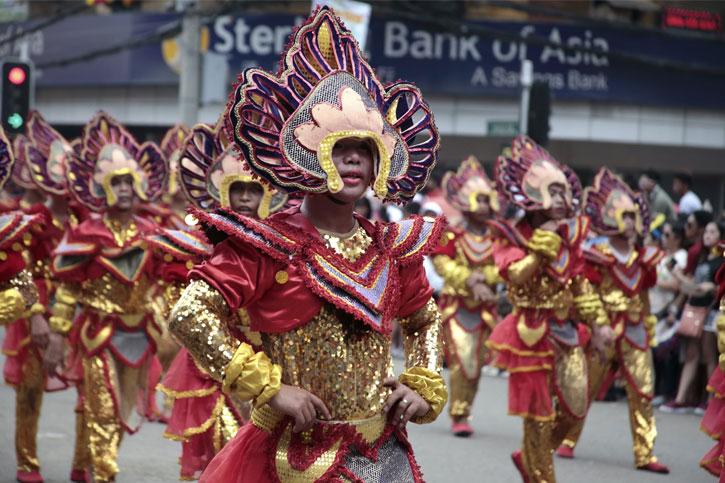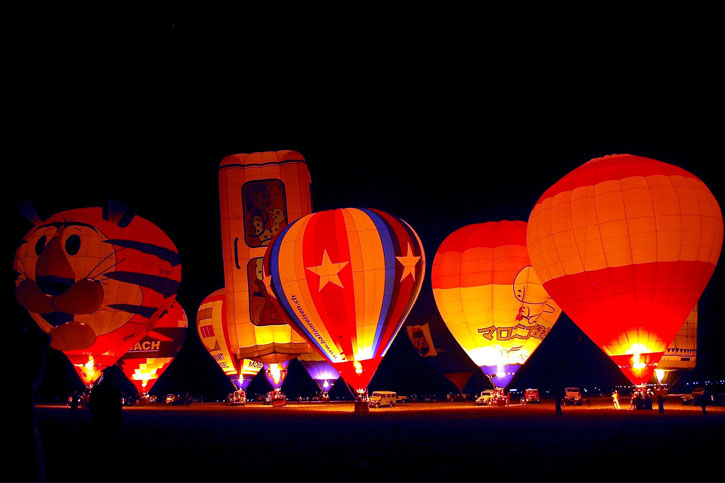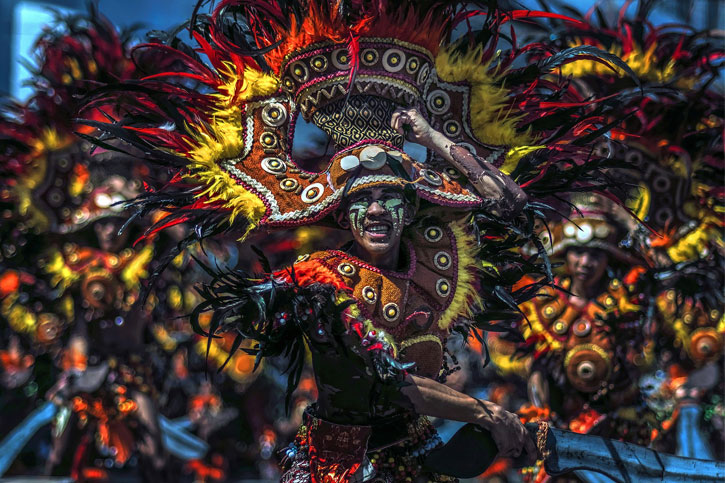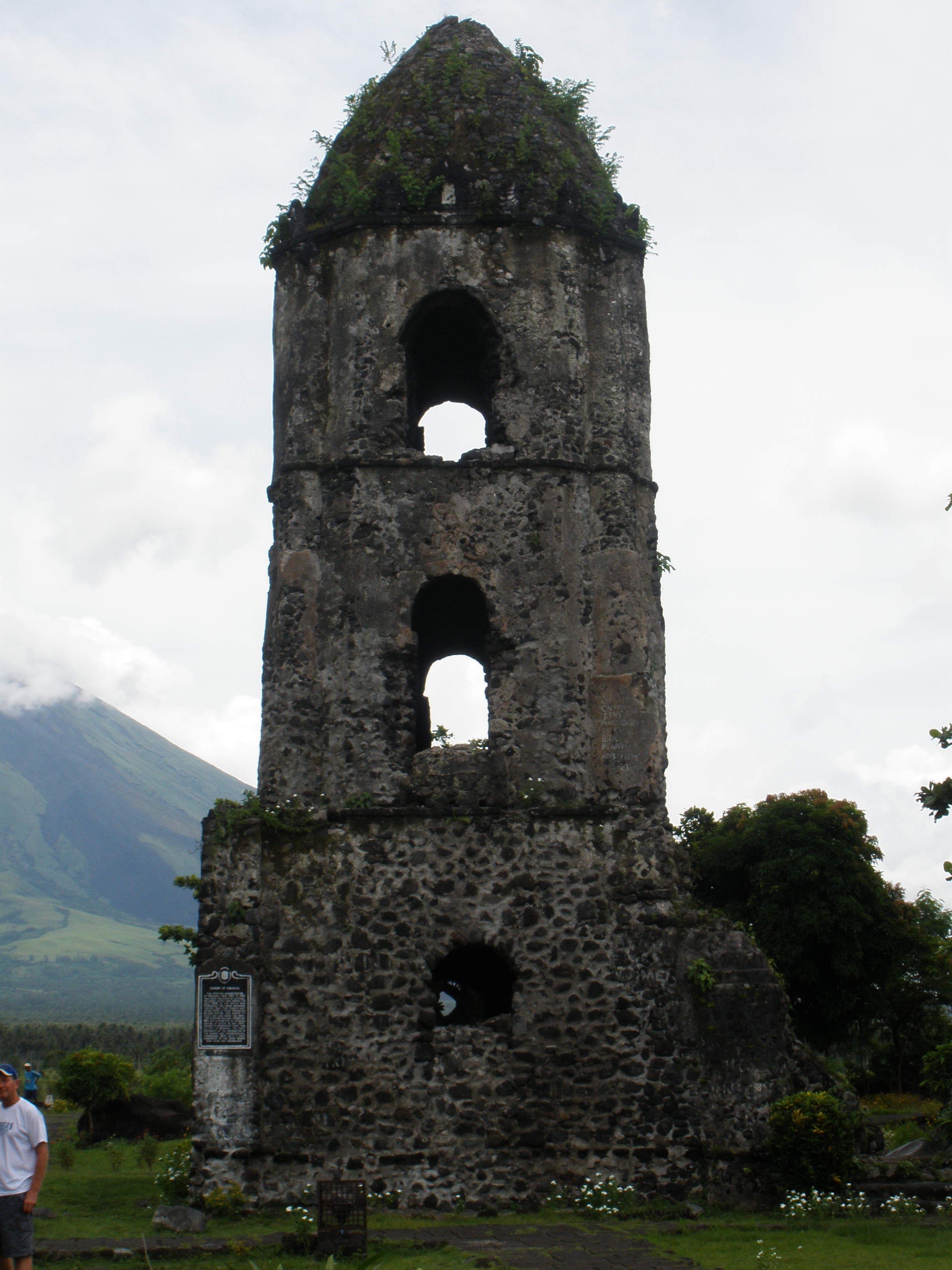Your Guide to January Festivals in the Philippines 2024
If you plan to participate in January festivals in the Philippines for 2024, you’re probably too late to bag cheap domestic flights or discount hotel rooms, but you’re never too late to join in on the fun.
So if you’re visiting the country and want to experience in-your-face local culture, good food, and non-stop celebrations with people, then here are the top January events in the Philippines.
January Festivals in the Philippines: Luzon
1) Feast of the Black Nazarene
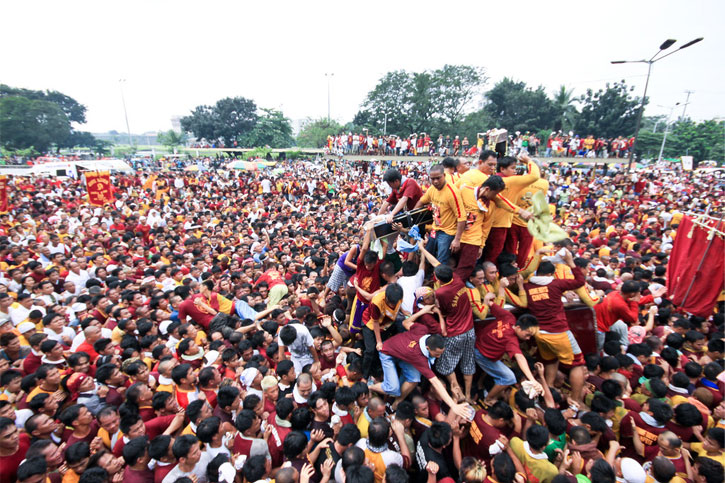
- When is Feast of the Black Nazarene: January 9
- Where is Feast of the Black Nazarene: Quiapo, Manila
One of the most famous religious festivals in the Philippines, the Feast of the Black Nazarene is a significant religious event held annually in Quiapo, Manila, that draws millions of devotees and spectators.
Centered around the revered image of the Black Nazarene, a dark-skinned statue of Jesus Christ carrying the Cross.
Barefoot devotees dressed in maroon or dark-colored attire embark on a grand procession as an expression of penance and humility. They often participate in the “Pahalik,” where they approach the image to kiss or touch it, believing in its miraculous powers.
The procession weaves through the streets of Quiapo. This creates a sea of people moving in unison, united by their faith.
BE WARNED! If you’re unaware that there’s a festival happening in Quiapo when you visit, you’re doomed because vehicular traffic won’t cut it during the procession. You’d have to walk by foot and squeeze yourself in between hundreds of people.
During the Feast of the Black Nazarene, devotees pray for blessings, healing, and spiritual grace. The event reflects a unique blend of Filipino Catholicism, local customs, and a sense of communal spirituality.
Despite the massive crowds and the challenges of organizing such a large-scale event, the Feast of the Black Nazarene remains a powerful testament to the resilience and profound religious identity of the people in Quiapo and beyond.
2) Fiesta Tsinoy
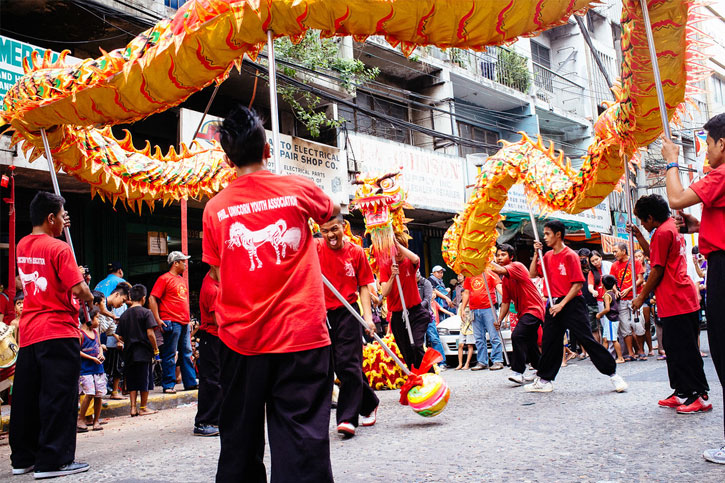
- When is Fiesta Tsinoy: January 26
- Where is Fiesta Tisnoy: Legazpi City, Albay
During Fiesta Tsinoy, the Filipino-Chinese community in Albay Chapter comes together to commemorate Chinese New Year, engaging in a lively celebration filled with diverse activities.
Participants can enjoy captivating performances like the Dragon and Lion Dance, immerse themselves in a rich Chinese Cultural Program, and partake in ancestral veneration during a special mass. The event promises a vibrant and culturally significant experience for all involved.
January Festivals in the Philippines: Visayas
3) Sinulog Festival
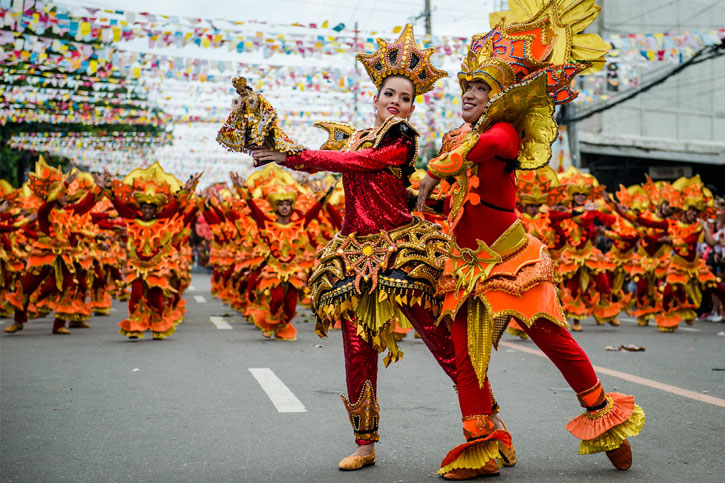
- When is Sinulog Festival: 15 January or every second Sunday of January
- Where is Sinulog Festival: Cebu City
Sinulog Festival in Cebu City is an exhilarating celebration that immerses you in the vibrant cultural tapestry of the Philippines.
Held annually on the third Sunday of January, this grand event honors the Santo Niño, the Holy Child Jesus.
The city comes alive with a rhythmic fusion of religious fervor and lively street festivities, creating an atmosphere of pure joy and devotion.
At the heart of Sinulog is the captivating street dance competition, where contingents clad in colorful costumes perform a choreographed dance known as the “Sinulog dance.”
The streets pulsate with the beat of drums and chants of “Pit Señor,” a jubilant expression that encapsulates the essence of the festival.
Join the crowd to witness these vibrant performances, and you’ll feel the energy and infectious spirit that defines Sinulog.
Apart from the dance competition, Sinulog also features a solemn procession, showcasing the religious aspect of the festival.
Pilgrims and devotees express their faith and participate in religious rituals. The festival extends beyond the streets, with various cultural events, concerts, and parades creating a dynamic and immersive experience.
Sinulog Festival is a dazzling journey into the heart of Cebuano culture, where tradition, faith, and revelry seamlessly intertwine.
Sinulog Festival 2024: 12 Cool Things to Do at Cebu’s Sinulog
4) Ati – Atihan Festival
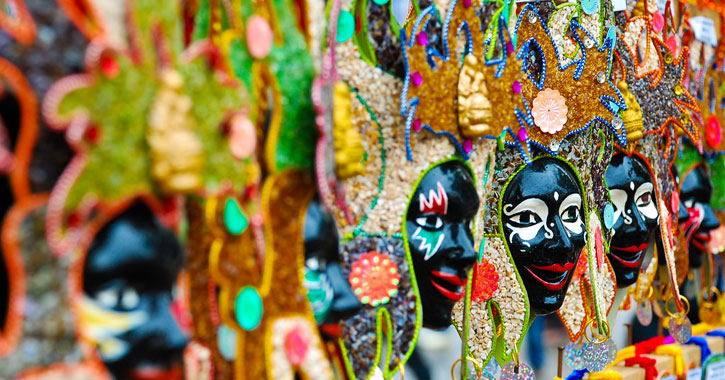
- When is Ati-Atihan Festival: 3rd Sunday of January
- Where is Ati-Atihan Festival: Kalibo, Aklan
The Ati-Atihan Festival in Kalibo, Aklan, Philippines, is a vibrant and lively celebration that pays homage to the Santo Niño (the Holy Child) and the indigenous Ati people, who were the original settlers of the Panay Island.
This annual festival is renowned for its energetic street dancing and colorful costumes, drawing locals and tourists alike to join in the spirited revelry.
The festival usually takes place in January and lasts for several days, with the main highlight being the Ati-Atihan Parade.
Throughout the festival, the streets of Kalibo come alive with the rhythmic beat of drums and the infectious sounds of traditional music.
Participants, both locals and visitors, don vibrant and elaborate costumes resembling the clothing of the Ati tribe, covering themselves in soot or body paint to complete the indigenous look.
The streets transform into a sea of colors and joy as people dance in unison, creating a festive atmosphere that is unparalleled.
Apart from the street parade, the Ati-Atihan Festival also features religious processions, where devotees carry images of the Santo Niño while engaging in prayers and chants.
Additionally, various competitions, street parties, and food fairs are organized, offering a diverse range of activities for everyone to enjoy.
5) The Dinagyang Festival
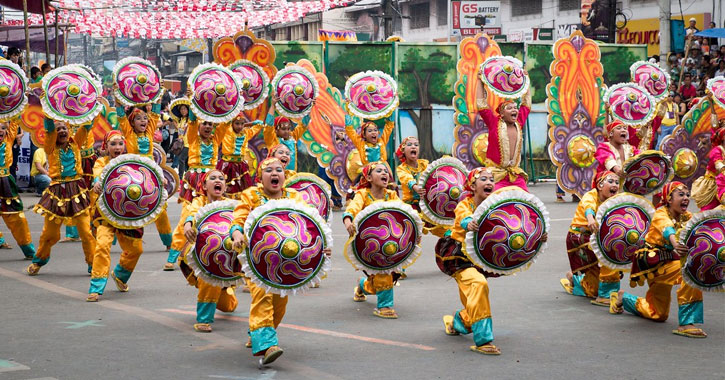
- When is Dinagyang Festival: 4th Sunday of January
- Where is Dinagyang Festival: Iloilo
Get ready for a fiesta like no other in the heart of the Philippines – Dinagyang Festival in Iloilo City!
This dazzling celebration is not just a festival; it’s an explosion of colors, rhythm, and cultural richness that will sweep you off your feet.
Held every January, Dinagyang is a captivating showcase of the city’s vibrant spirit and deep-rooted traditions.
Picture this: the streets come alive with rhythmic beats, as brilliantly adorned dancers move in sync to tell tales of faith and history through the Dinagyang dance. The air is charged with infectious energy, and you can’t help but be swept away by the lively atmosphere.
But Dinagyang isn’t just about the parade. The festival spills into the city’s charming corners, offering a taste of Iloilo’s culinary delights, rich history, and warm hospitality.
From savoring local delicacies to exploring historical sites and engaging with the friendly locals, Dinagyang is an invitation to experience the soul of Iloilo.
Dinagyang Festival 2024: Activities, Schedule, and Food Guide
January Festivals in the Philippines: Mindanao
6) Diyandi Festival
- When is Diyandi Festival: 3rd Monday of January
- Where is Diyandi Festival: Balingasag, Misamis Oriental
Diyandi Festival joyously honors the Higaonon Tribes of Balingasag, showcasing their songs, culture, and rich heritage.
The term “Diyandi,” translating to “celebrate” in Higaonon, encapsulates the spirit of the event. It serves as a vibrant testament to the harmonious coexistence of tri-people—Christians, Higaonon, and Maranaos.
Amidst the festivities, the festival reverently pays homage to Saint Michael the Archangel, recognized as the patron saint of Iliganons.
This cultural celebration weaves a tapestry of traditions, fostering unity and mutual respect within the diverse community.
The Diyandi Festival emerges as a cherished occasion, fostering a sense of pride and shared identity among its participants.
7) Pasalamat Festival

- When is Pasalamat Festival: 3rd Week of January
- Where is Pasalamat Festival: Pagadian City, Zamboanga del Sur
Annually, every 3rd Sunday of January, Pagadian City honors Sr. Santo Niño, commemorating his image’s arrival in the Philippines.
The Catholic Church leads a reenactment of the image’s arrival through a procession.
The Pasalamat Festival features a vibrant fluvial parade (regatta), trade exhibits, the Mutya ng Pagadian beauty pageant, carnival shows, and a civic-military parade.
This celebration serves as a joyous expression of gratitude, with the religious and cultural aspects intertwining seamlessly.
The fluvial parade adds a maritime flair, symbolizing the saint’s arrival. Trade exhibits showcase local craftsmanship, while the beauty pageant and civic-military parade amplify the festive atmosphere.
The Pasalamat Festival stands as a cherished tradition, blending religious devotion with cultural festivities in Pagadian City.
8) Kuyamis Festival
- When is the Kuyamis Festival: January 6-11
- Where is the Kuyamis Festival: Provincial Capitol ground, Misamis Oriental
The Kuyamis Festival, a spectacular celebration in Misamis Oriental, unites the towns and cities of the region in Cagayan de Oro City for an exuberant week-long extravaganza. Among the many festivities, the Kuyamis Festival Street Dancing stands out as a captivating highlight.
This annual event serves as a heartfelt expression of gratitude and recognition for the customs of the indigenous “lumads” who have long thrived in Misamis, relying on the abundance of sweet coconuts as a staple in their diet.
The Kuyamis Festival not only showcases vibrant street dances but also serves as a cultural bridge, connecting the past with the present.
Participants and spectators alike get to immerse themselves in the rich traditions of the lumads, fostering a deeper understanding and appreciation for their heritage.
As the beats of the music and the colorful performances echo through the streets, the Kuyamis Festival becomes a symbol of unity and cultural pride, celebrating the resilience and diversity of the Misamis Oriental community.
Which January Festivals in the Philippines are You Excited to Join?
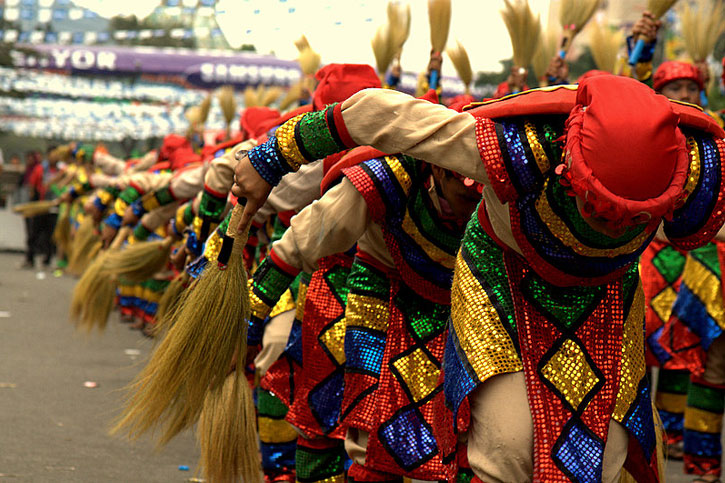
There are many other smaller and underrated January festivals in the Philippines.
But if you’re after the most popular events with the most number of activities, people and celebrations, then these 8 festivals should be perfect.
I’m sure it won’t be possible visiting ALL festivals throughout the month.
If you’re finding it hard to pick, I recommend planning for any of these three festivals in Visayas: Dinagyang, Ati-Atihan, and Sinulog.

